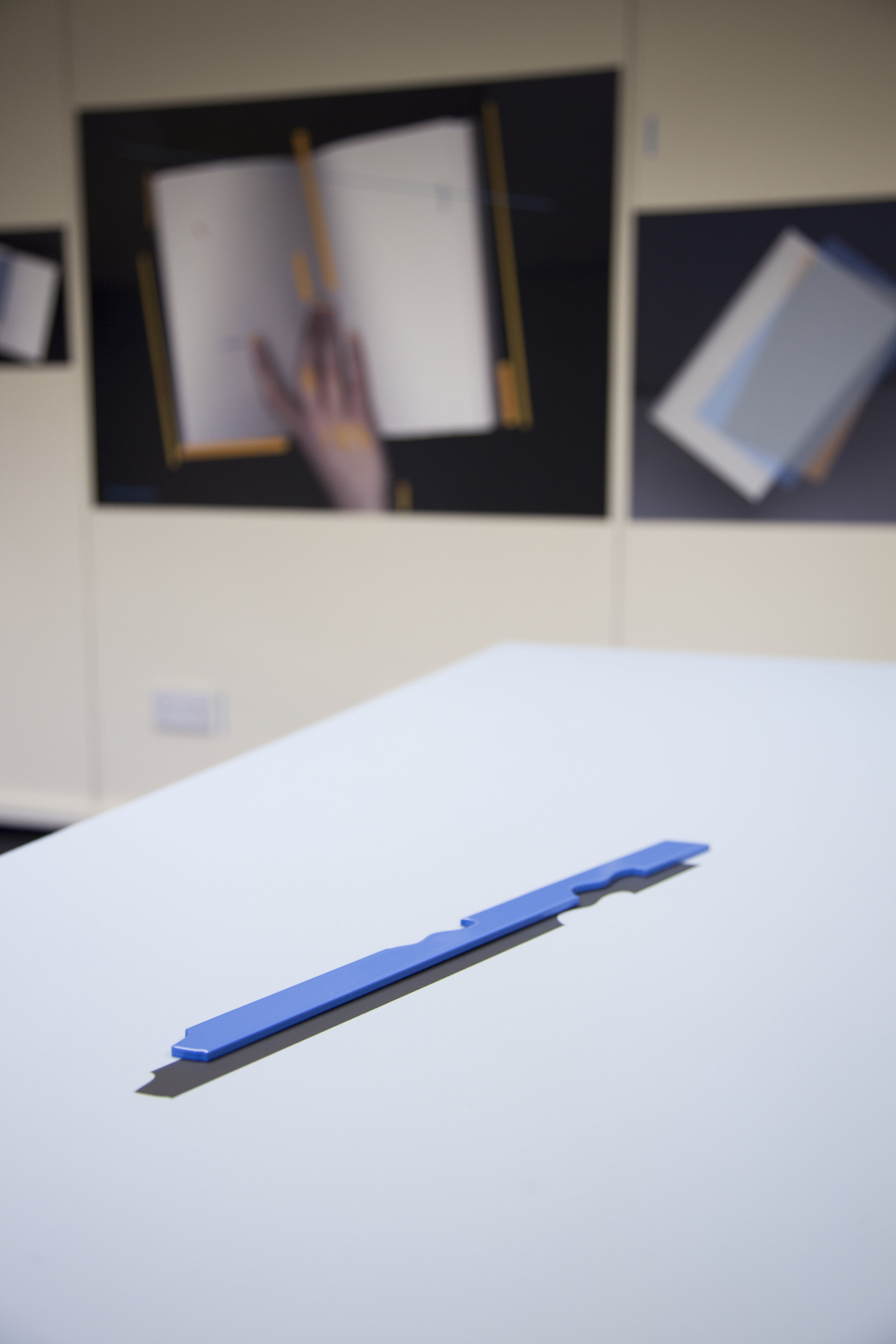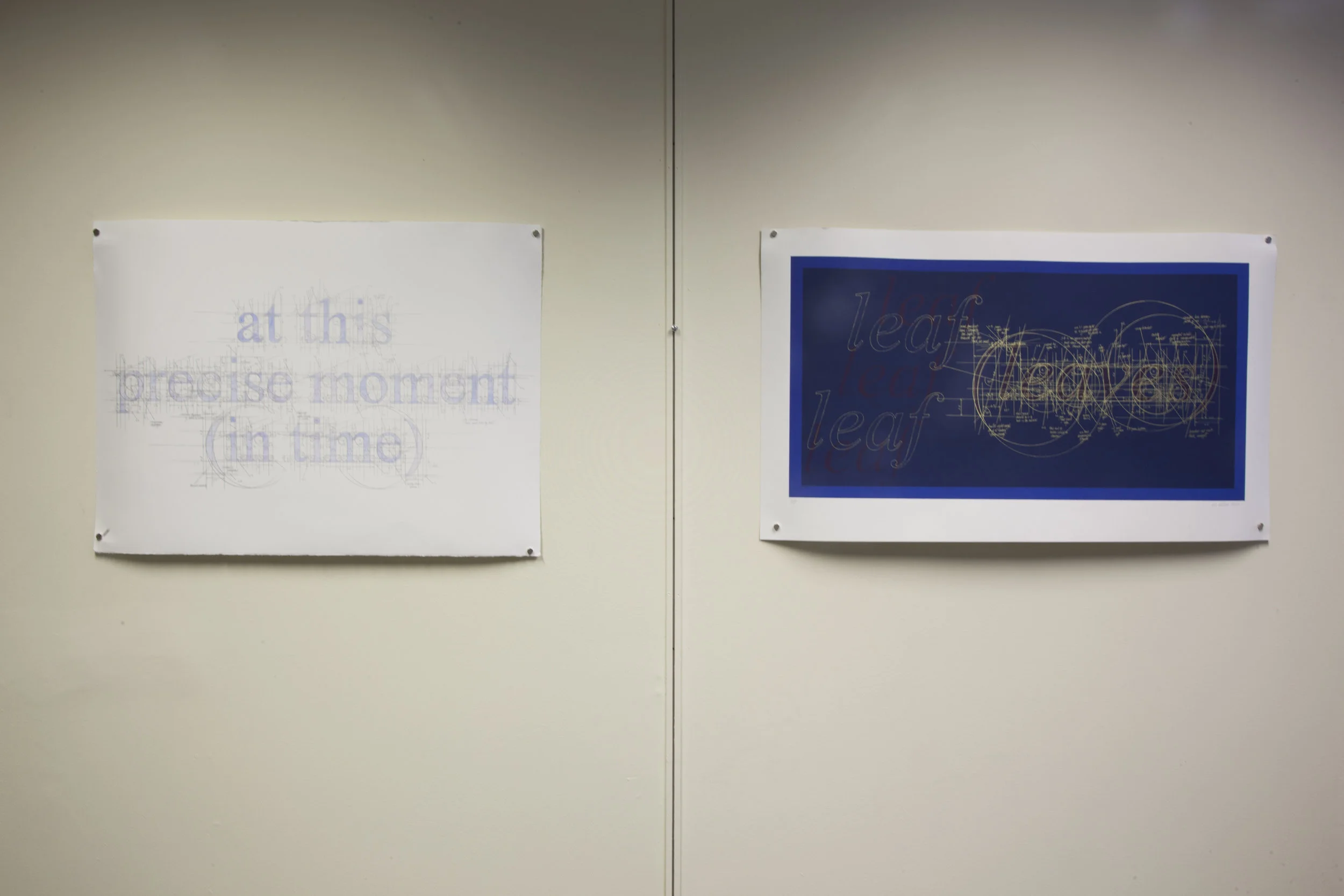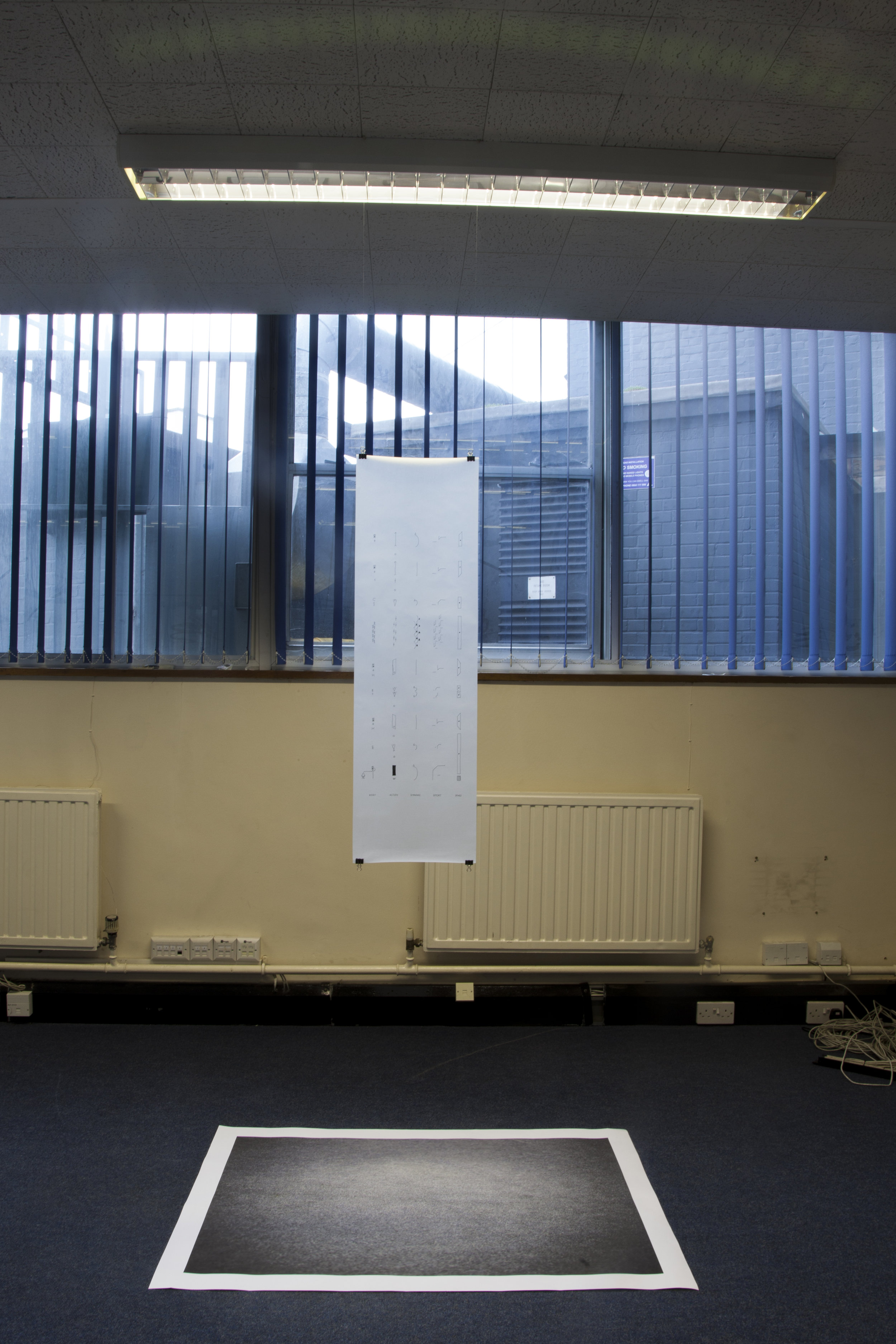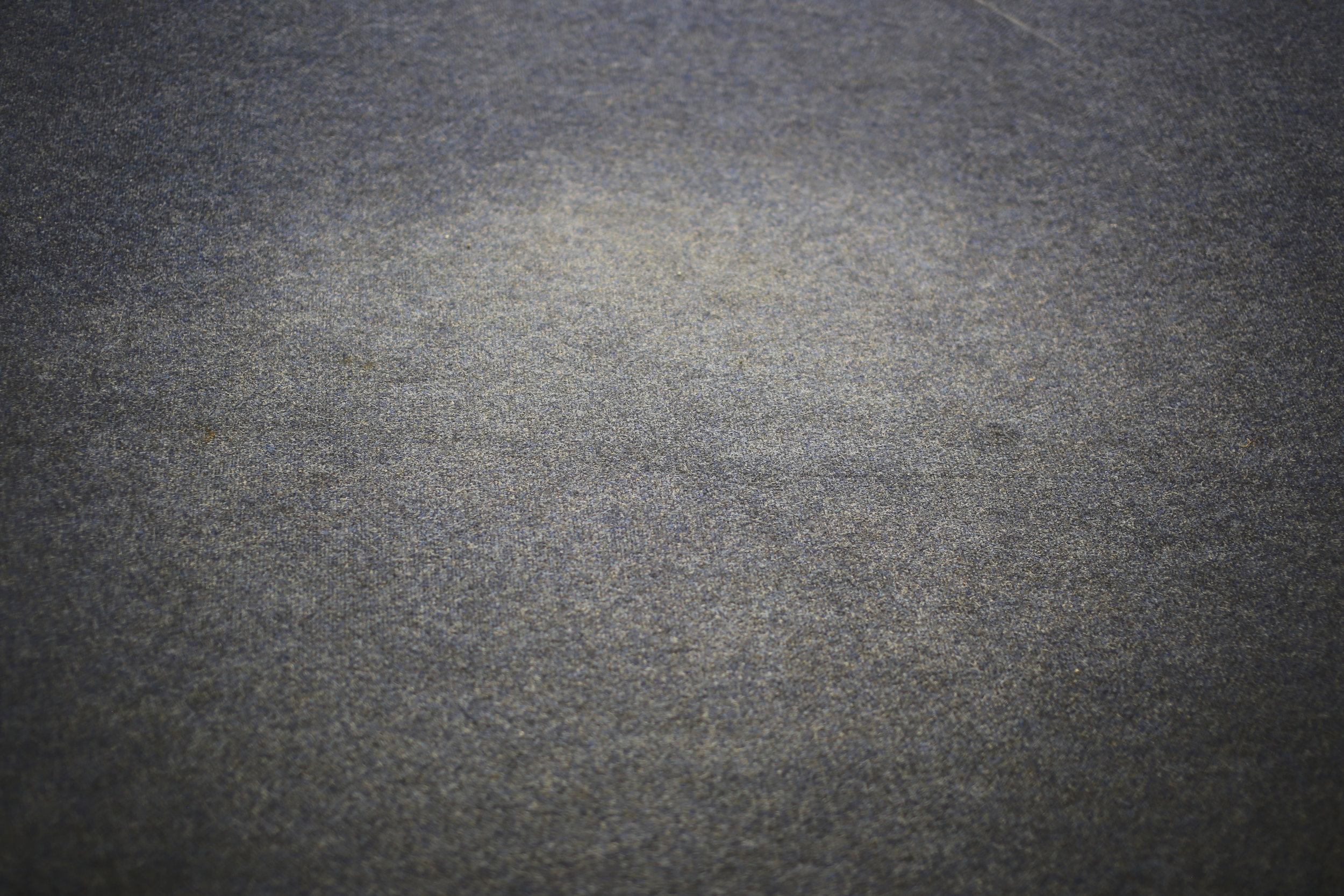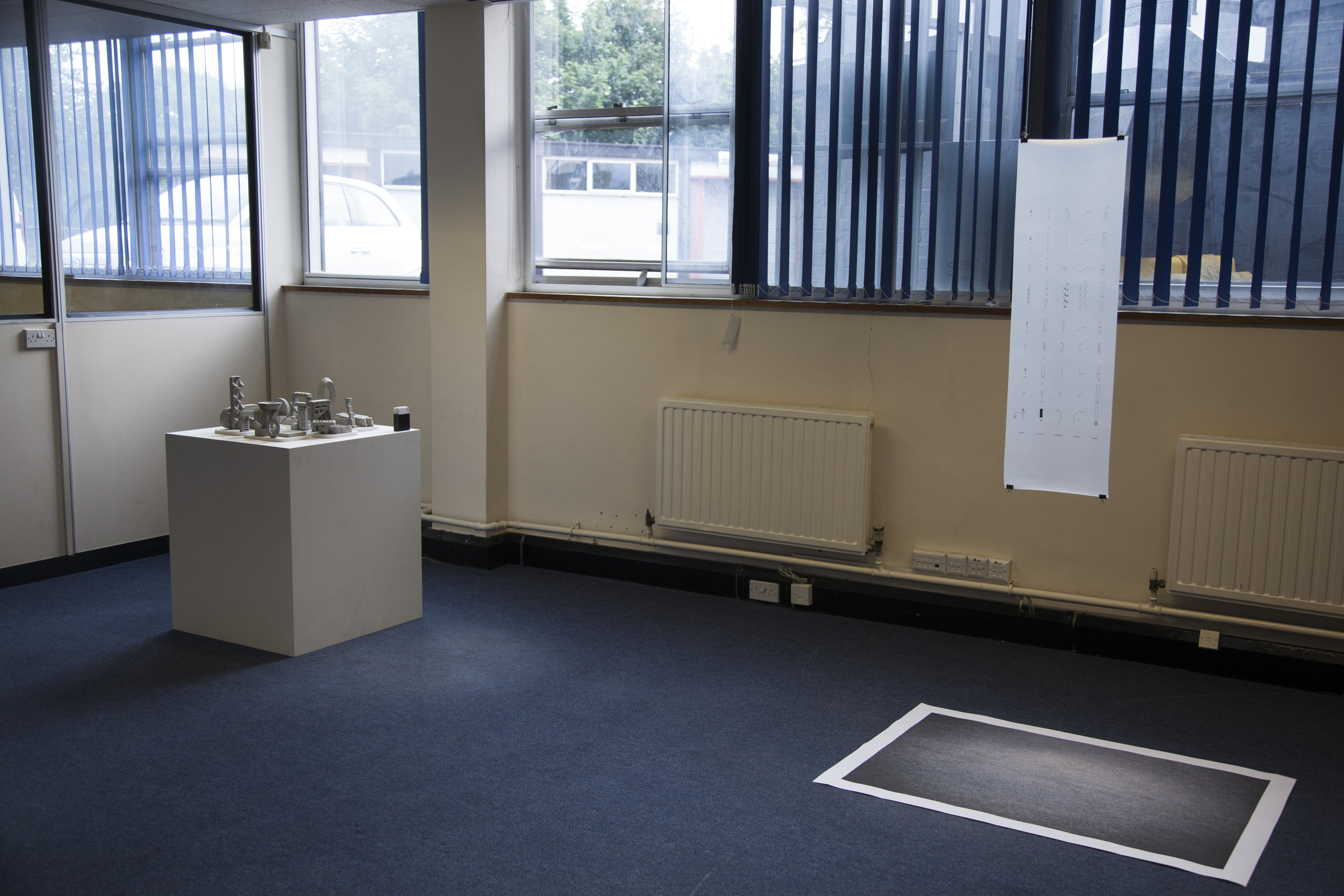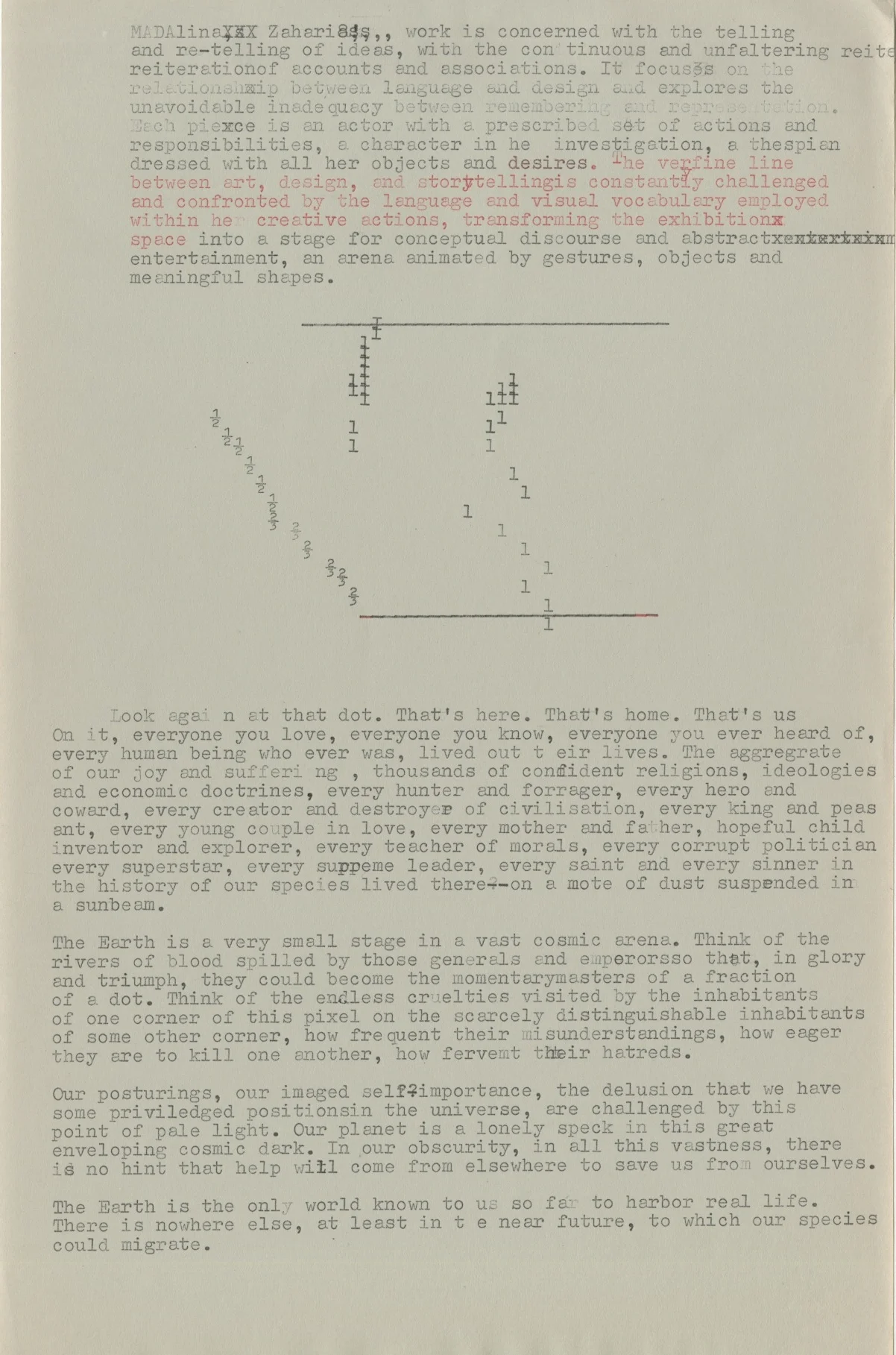MLM
Mind.Language.Matter
James Kessell
Jim Brown
Liz Collini
Madalina Zaharia
Rowan Lear
Stephen Dutton
The Drawing Shed
Dance Performance by Ellie Sears
Photographs credited to Gudbjorg Ylfa
Videography by Pen and Scissor Productions
St Marys House, Duke Street, Norwich.
NR3 2QA
“What I have questioned throughout is how does language become a visual ? How is language materialised? By language I mean a method of communication. This exploration is for me, my artists and audience to understand the governing of language within both the making of artwork as well as in an era paraded with visual advertisements and diverse technology.”
Mind: The faculty of consciousness and thought in which a person can obtain knowledge and experience the world. Language: A method of communication.
Matter: A physical substance or materiality within space.
Mind.Language.Matter looks to push the boundaries and explore how these aspects are intwined. The variety of artists involved working with text, sculpture to performance, is a means to explain the multiple different components that language can both configure and articulate within both the art world and the everyday environment.
The the St Marys Office space becomes a place of weaving between and of being in limbo. The audience are invited to be led round the exhibition in one direction to experience each element. The works and the space are active and become a representation of how we, our minds and our thoughts are too always being exercised. Language here is abstracted and simplified for the audience to interpret and reconsider similarities and obscurities.
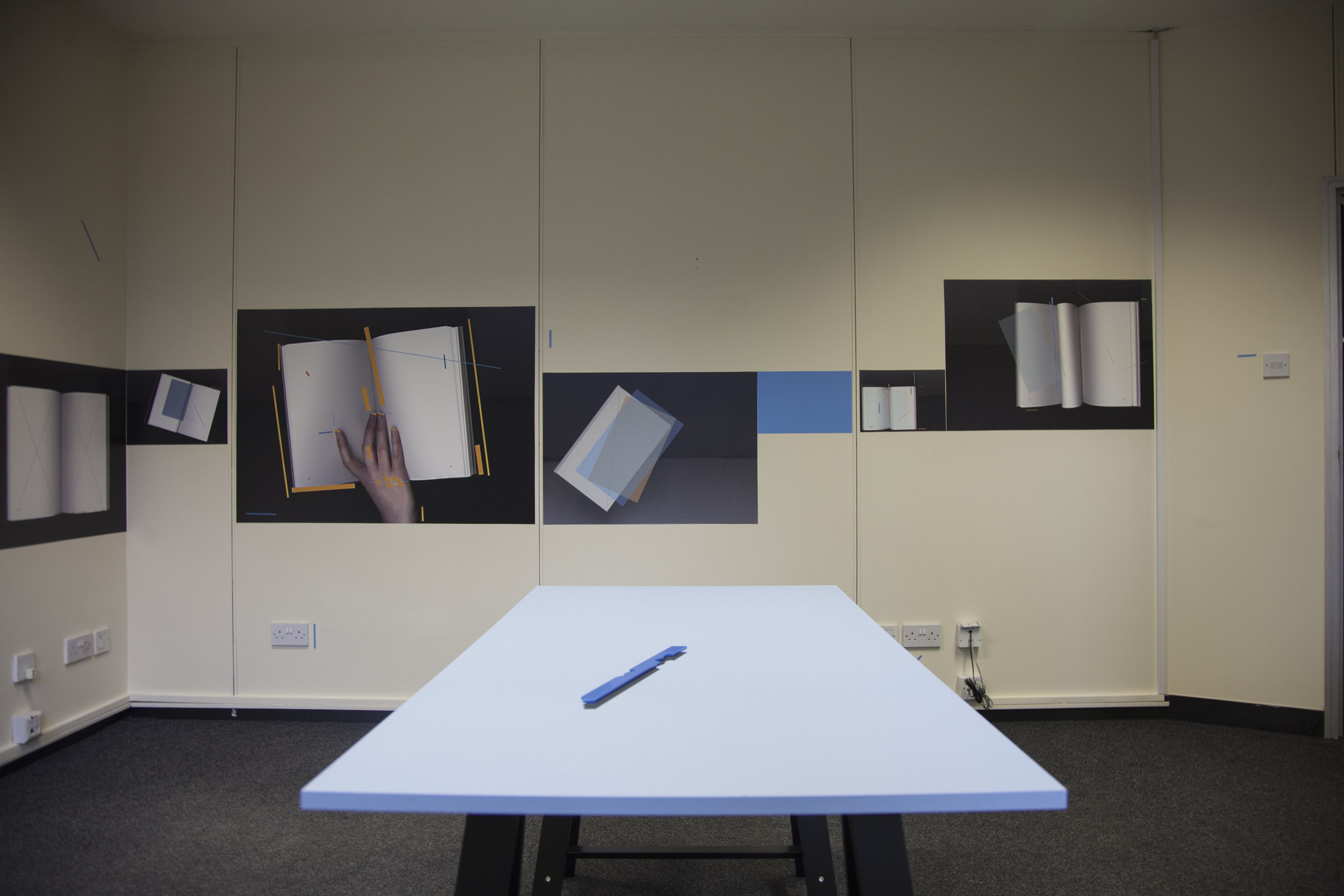
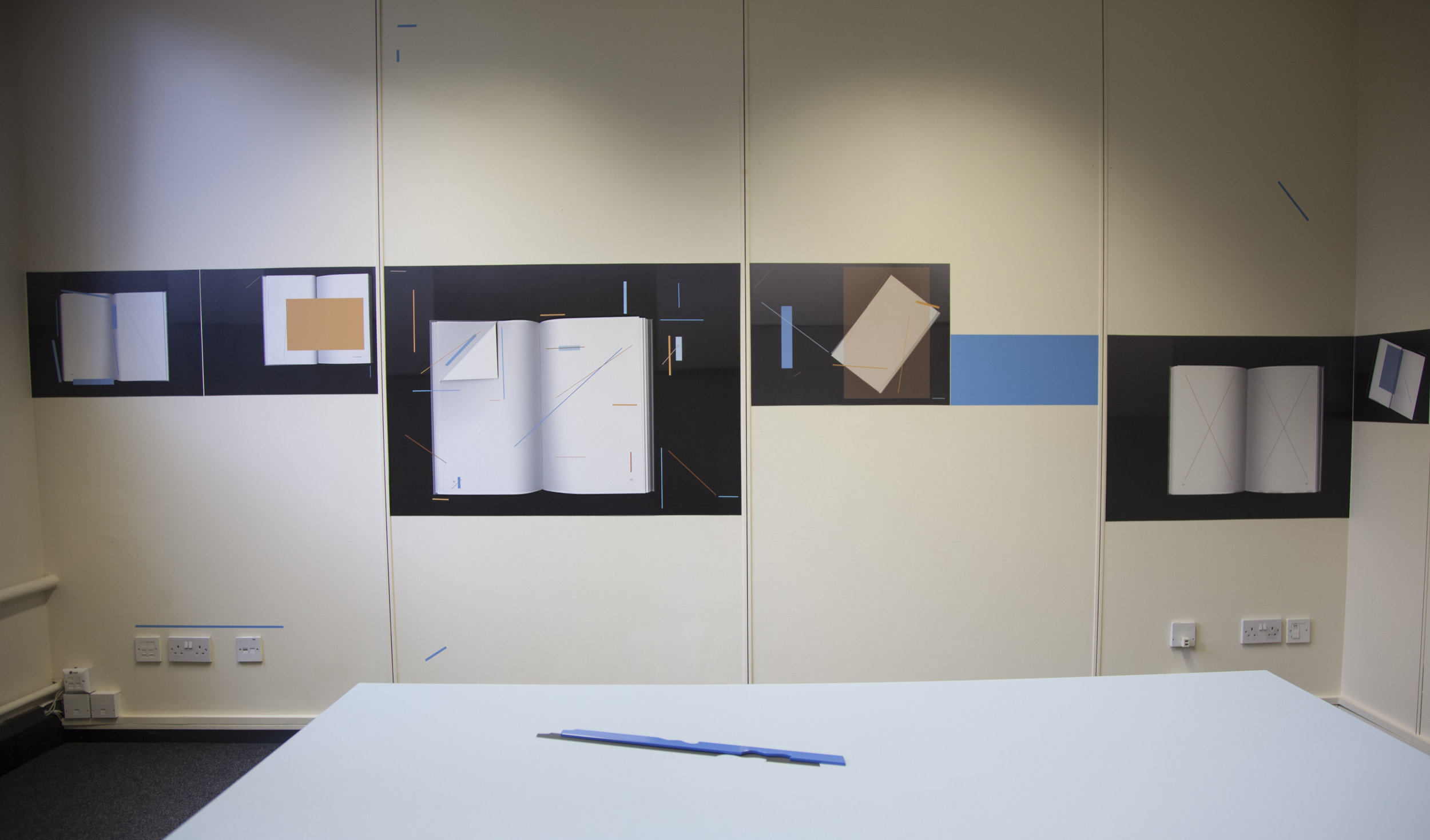
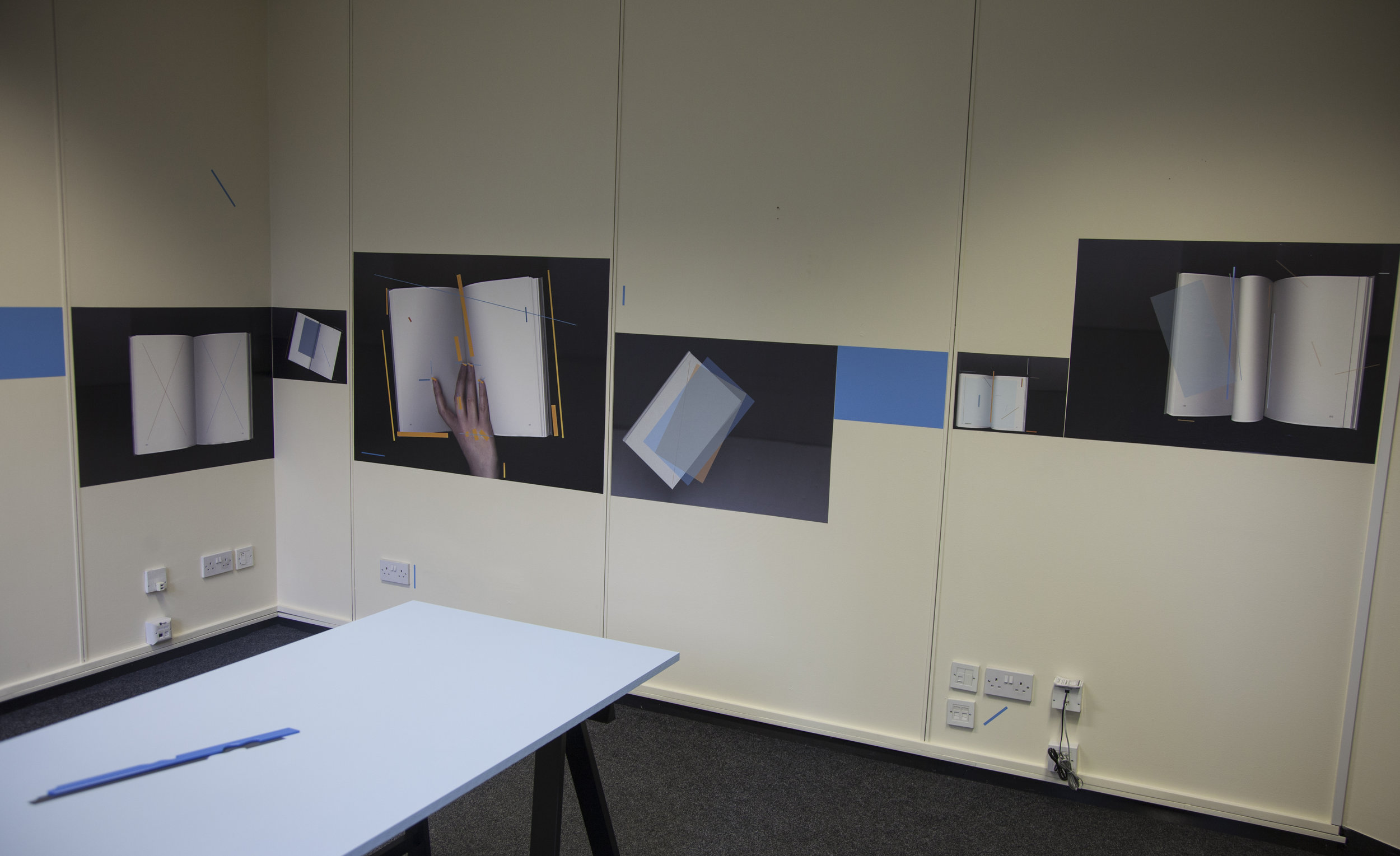
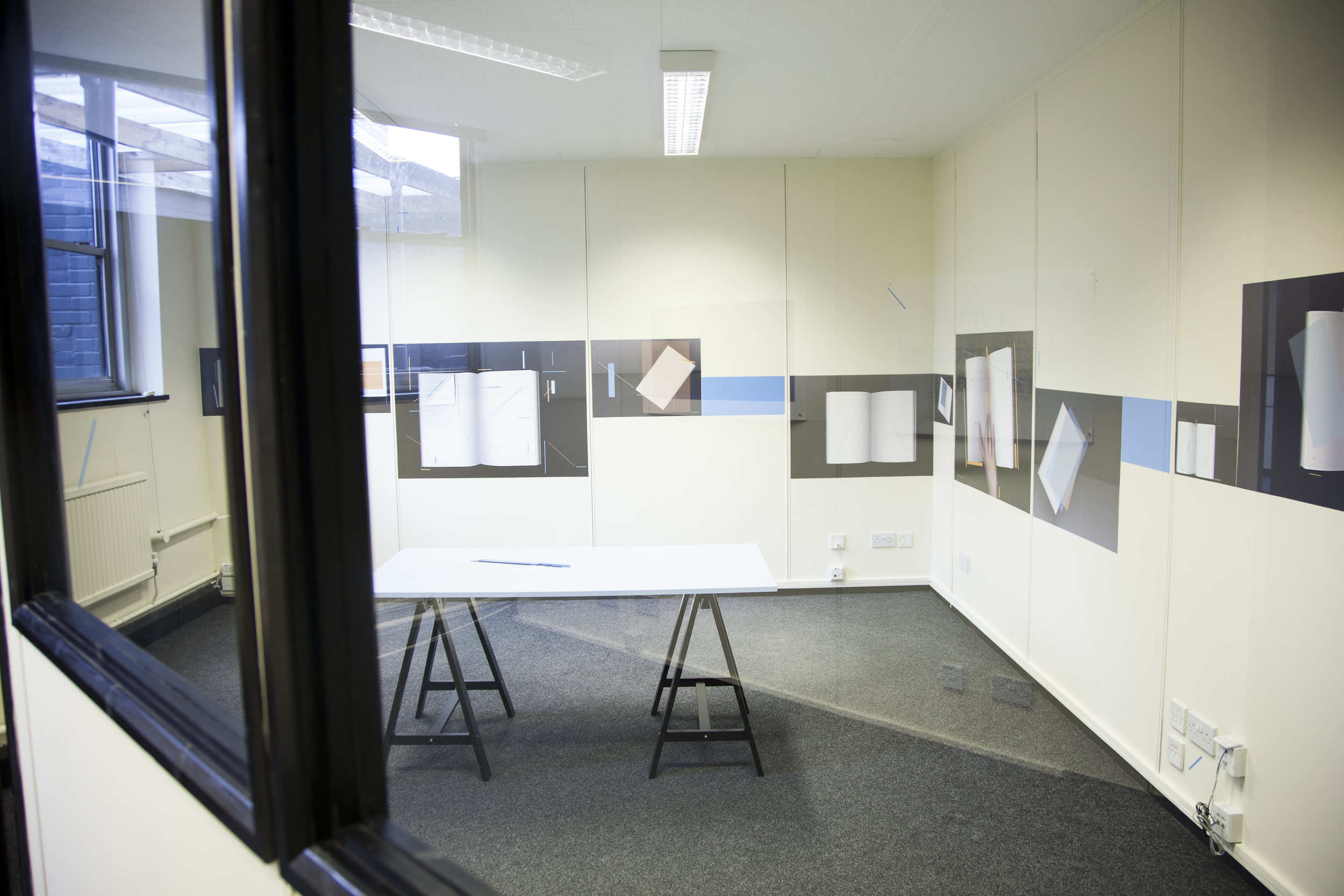
Madalina Zaharia
A space left to be filled. 2017.Digitally printed vinyl, MDF, Trestle legs and powdercoate steel. Dimensions variable
Madalina Zaharia’s work is concerned with the telling and re-telling of ideas, with the continuous and unfaltering reiteration of accounts and associations. It focuses on the relationship between language and design and explores the unavoidable inadequacy between remembering and representation. Each piece is an actor with a prescribed set of actions and responsibilities, a character in her investigation, a thespian dressed with all her objects and desires. The very fine line between art, design and storytelling is constantly challenged and confronted by the language and visual vocabulary employed within her creative actions, transforming the exhibition space into a stage for conceptual discourse and abstract entertainment, an arena animated by gestures, objects and meaningful shapes.
Liz Collini
Construction IV. Hand coloured screenprint on paper, 2014. Artist’s proof of an edition of 20; 56 x 76 cmFor JRL. Screenprint on paper, 2012. Artist’s proof of an edition of 10; 53 x 90 cm
I work with language in the form of texts, pursuing the (unattainable) ideal of a ‘perfect’ text. The supports, or grounds, for the drawings, prints and installations are always approached as forms of a page.
The written word can become uncanny when we start to look at it closely. It hovers between presence (in its materiality), and absence, in that the thing it represents is elsewhere. This paradox is magnified in the digital era through the mass of disposable, virtual text that surrounds us now in our everyday lives. I set out to slow things down, by remaking language, often through a time-consuming process of redrawing lettering by hand, or by rewriting texts and obscuring or dissolving them. I work only with handwriting and with Times New Roman, the ‘default’ font. This strategy frees me from typographic choices
James Kessell
Searching
2003
Digitally printed vinyl, Flat screen, Laptop
Dimensions variable
James Kessell is a multidisciplinary artist and designer employing diverse strategies and media to make intuitive explorations and expressions of what it is to be human. He aims to create work with ‘real-life’ resonance, work that looks back at us – reflecting and connecting us with our inner thoughts, needs, aspirations, anxieties, curiosities and doubts – and which draws out, interprets and perhaps expands our human understanding.
Rowan Lear
The Factory Of The Mind. 2017. Digital print, ink, vellum paper, speakers and audio
'The chair is a willing partner. It sighs softly, taking weight with only the slightest complaint. With a nudge of a toe, you wheel around to reach that stack of papers, pick up that report, seize that device. It's so effortless that you barely notice it at all. To be furniture is to be present, even essential, but always in the background, unnoticed.'
Rowan Lear is an artist, writer and organiser. Her materials are old and new media, found images and objects, and language itself, creating texts, installations and performative gestures. Across interweaving practices of thinking, doing, writing and making, she is relentlessly curious about systems, structures and patterns of behavior. Her recent work explores conditions of affective labour, the choreography of technical and bodily gestures, and collective strategies of organising otherwise.
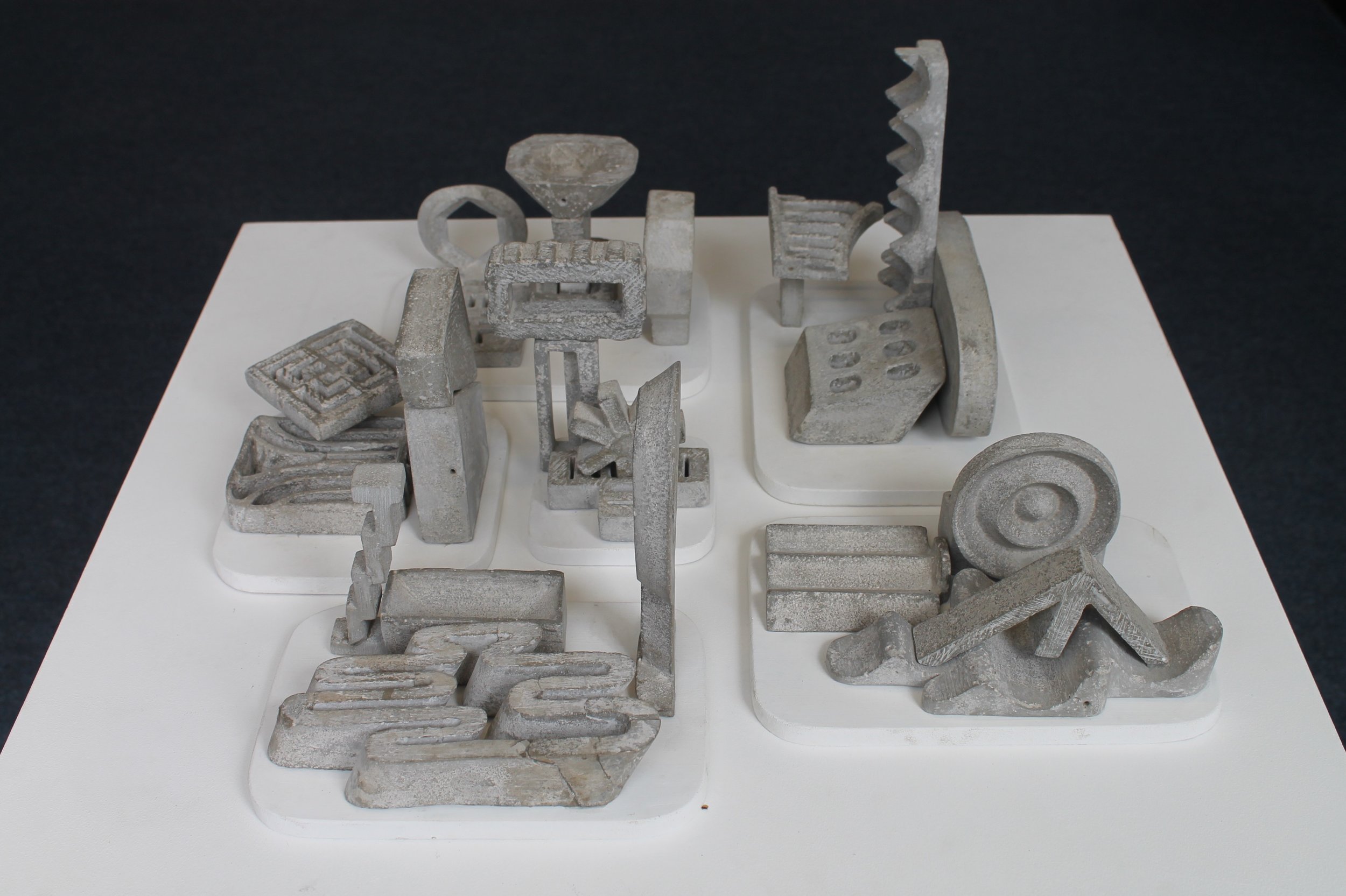
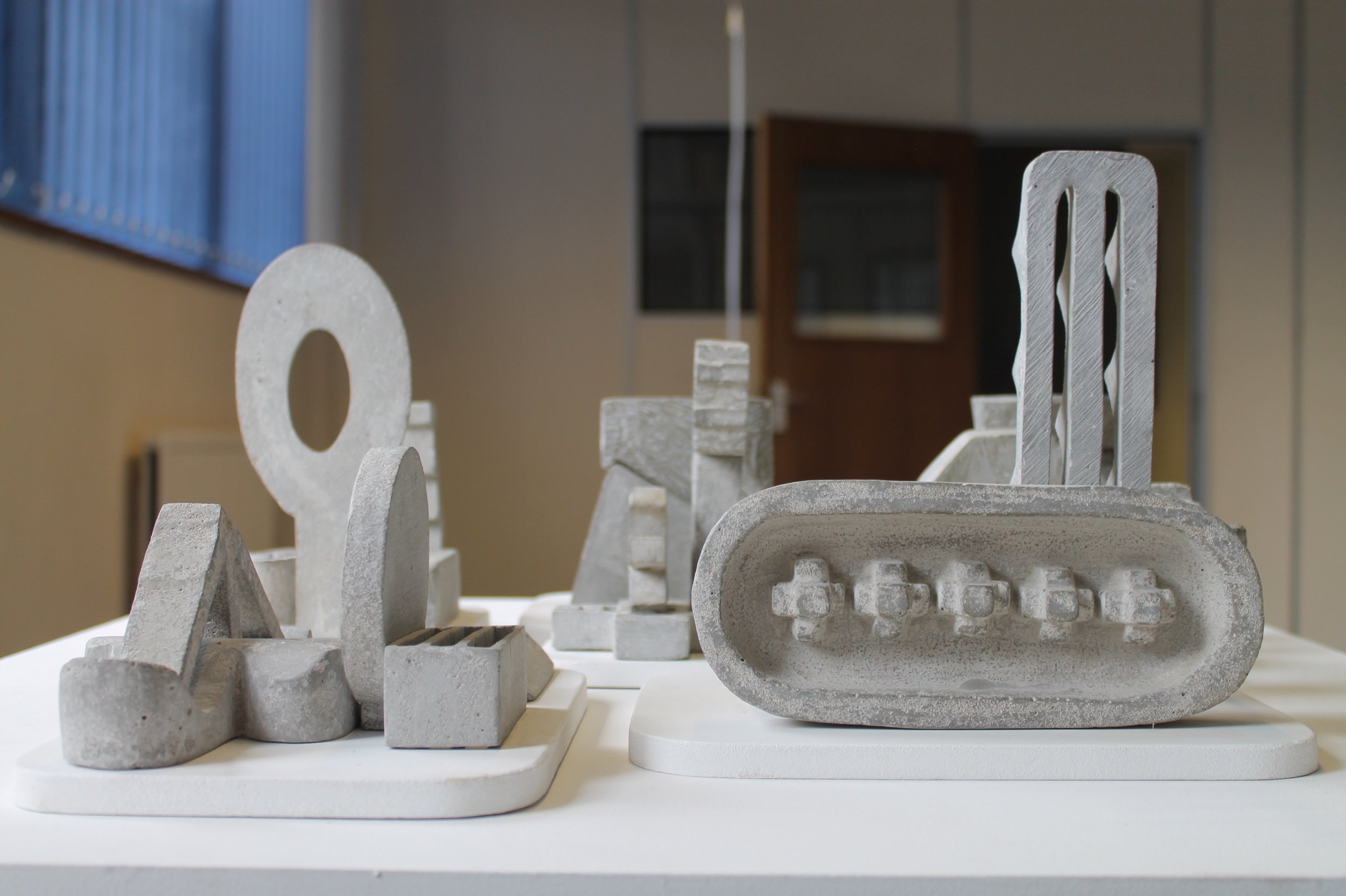
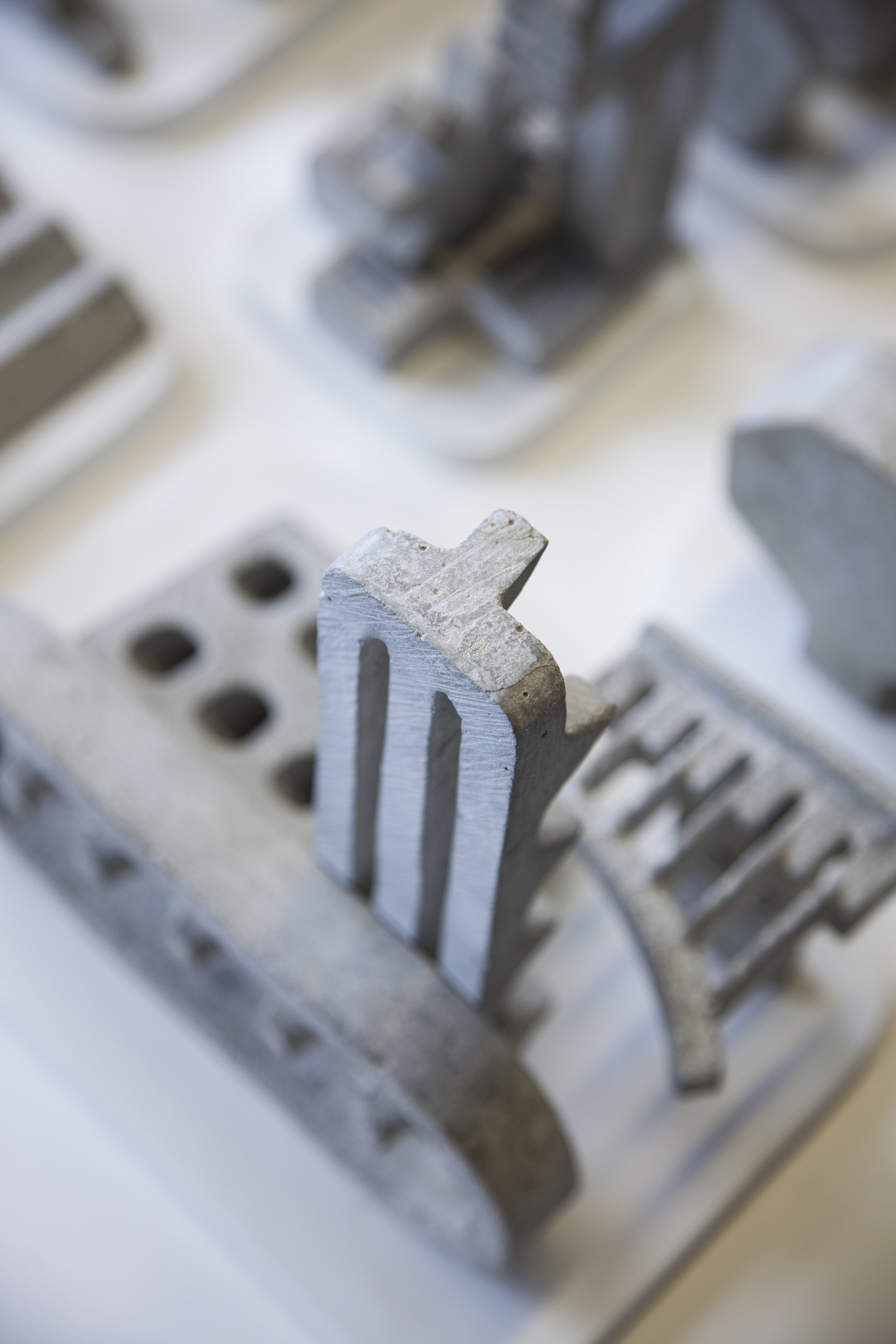
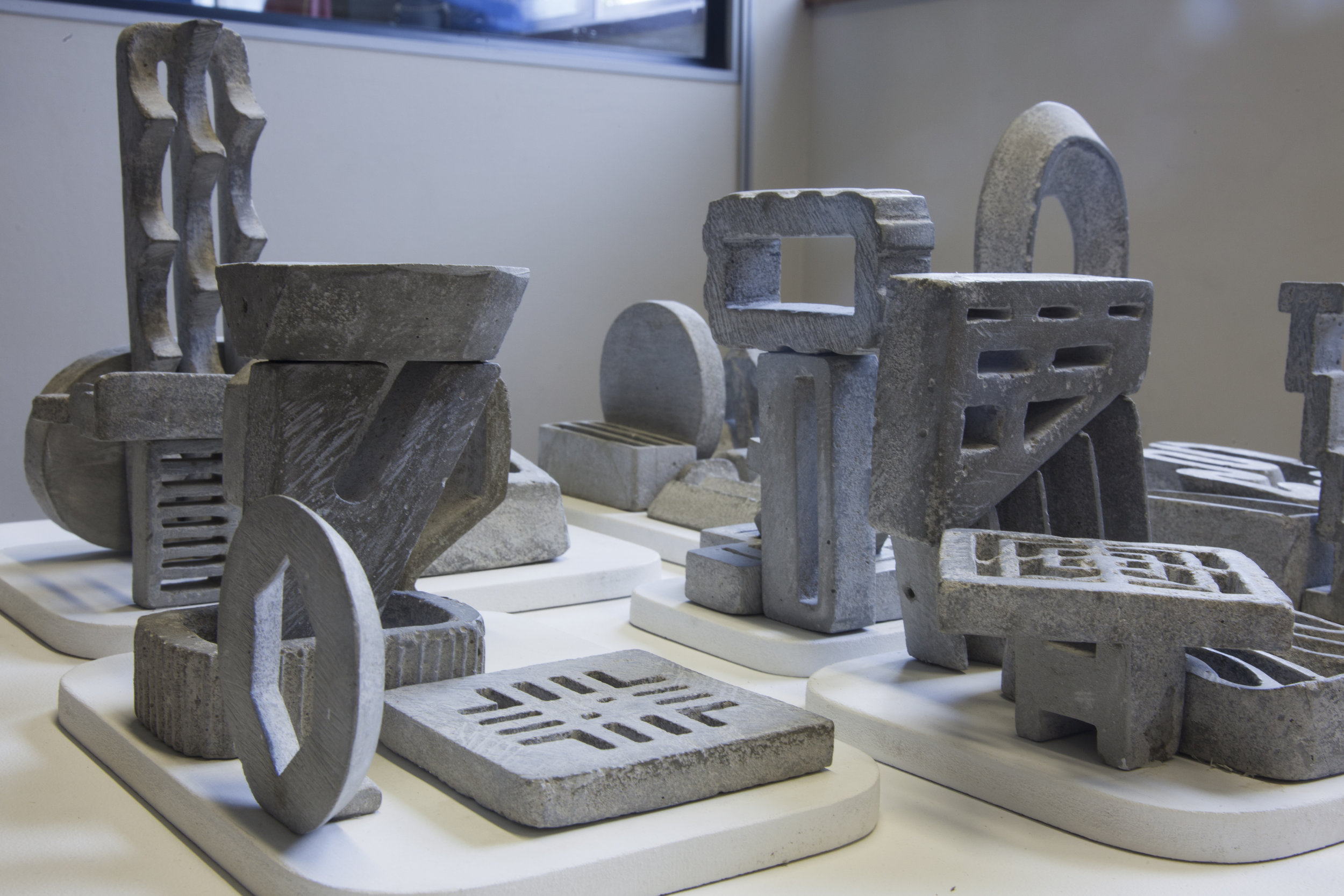
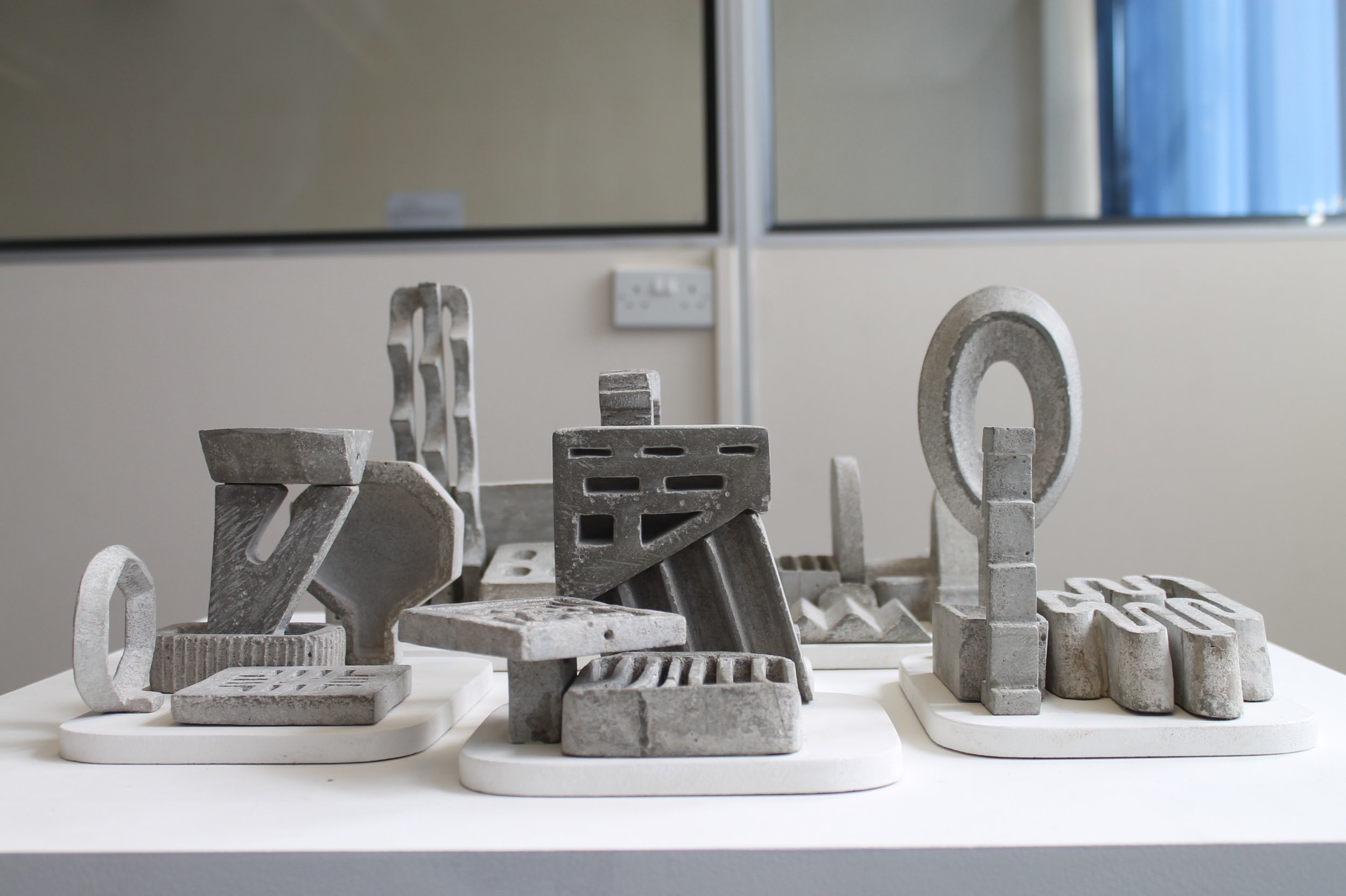


Jim Brown
Industrious Estate. 2016. Dimensions Variable
Brown grew up in Harlow New Town, the blocky uniformity and newness of the housing estates and shopping centres gave the impression of a giant kit model, these memories, along with the continual changes since of demolition and rebuilding are an influence in his work. His work can be seen as a continuation of this explorative, light hearted play. Within this framework, additional themes include human dialogue, indecision, interaction, confrontation, chaos .. and humour. Brown does don’t not currently rely directly on external reference material and has little of it in his studio, instead, he depends more on the transience of visual memories, where he hopes to pick up the essence of things rather than literal representations.
Stephen Dutton
Studio Behaviour.
2017
This text/performance was originally a piece produced for No Working Title (Natasha Kidd and Jo Addison) for their project ‘An inventory of Behaviours’ which focused on the rituals, traits, habits and conditions that the surround the production of art in the ‘the studio’. It is here being re-performed under the direction of Jade Anderson by inviting dancer Ellie Sears to create a response.
Along with his practice as an artist Steve is increasingly writing and delivering papers on the subject of ‘Artists’ institutes and the Institutes of Art’, drawing on complexities within his own practice and the practice of a growing body of artists (as opposed to academics and managers) who seek to rethink the nature of the art educational institution as a process of unfolding ‘epistemic events’ rather than a sequence of ‘progressive’ tiers of knowledge. This relationship to non-teleological space/time and the quizzing of standard modes of knowledge production and generation is central to his work both as an artist and as an academic.
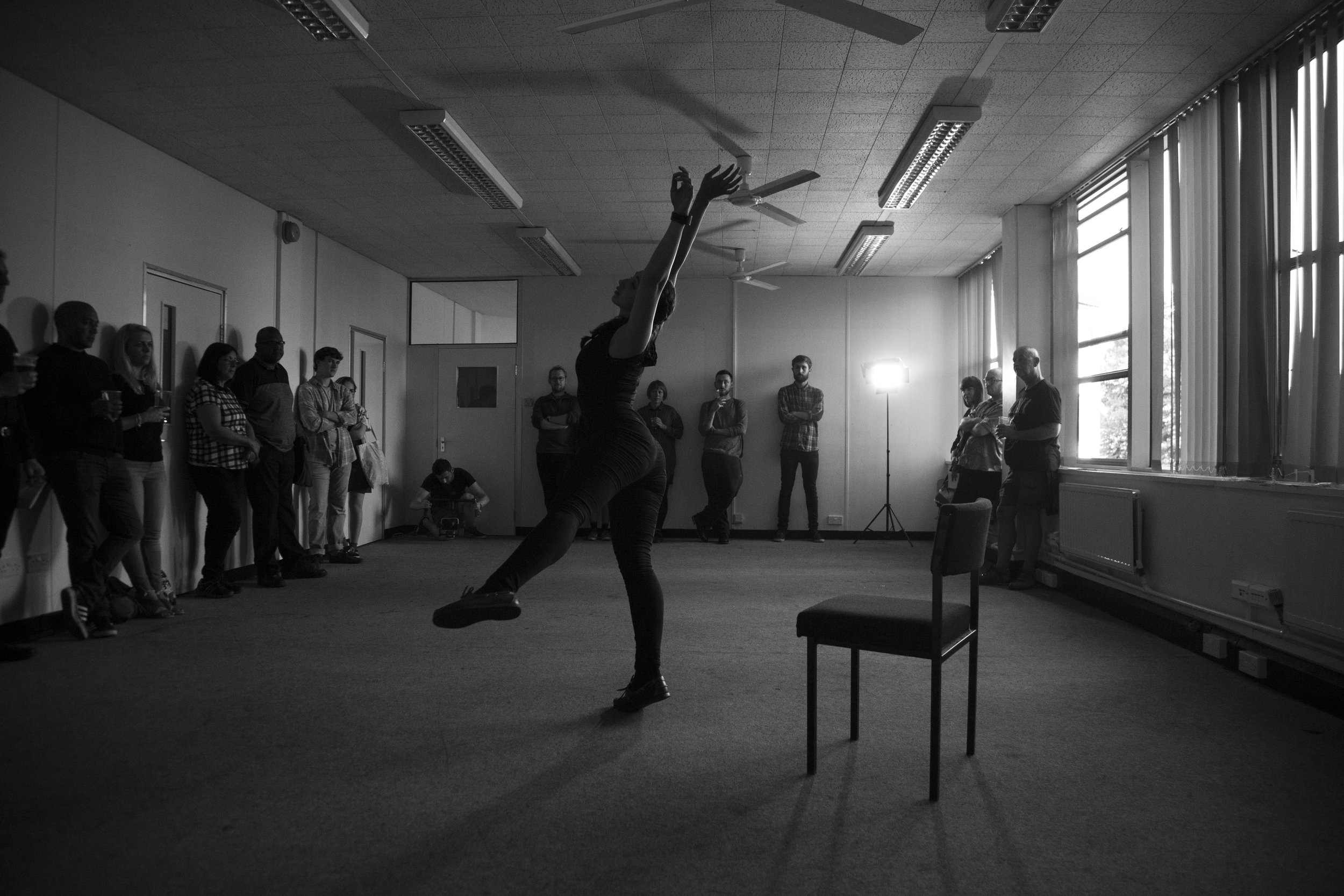
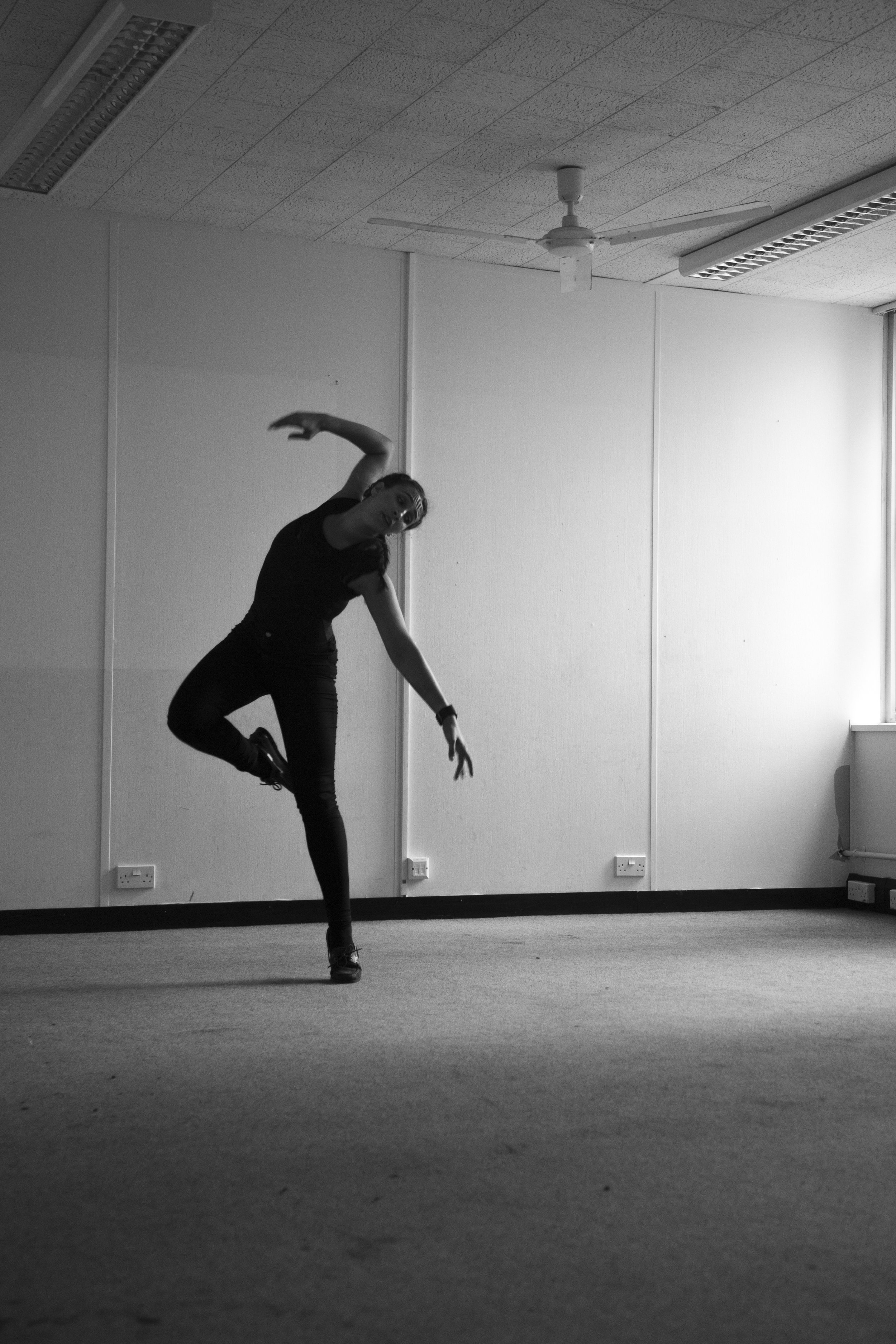
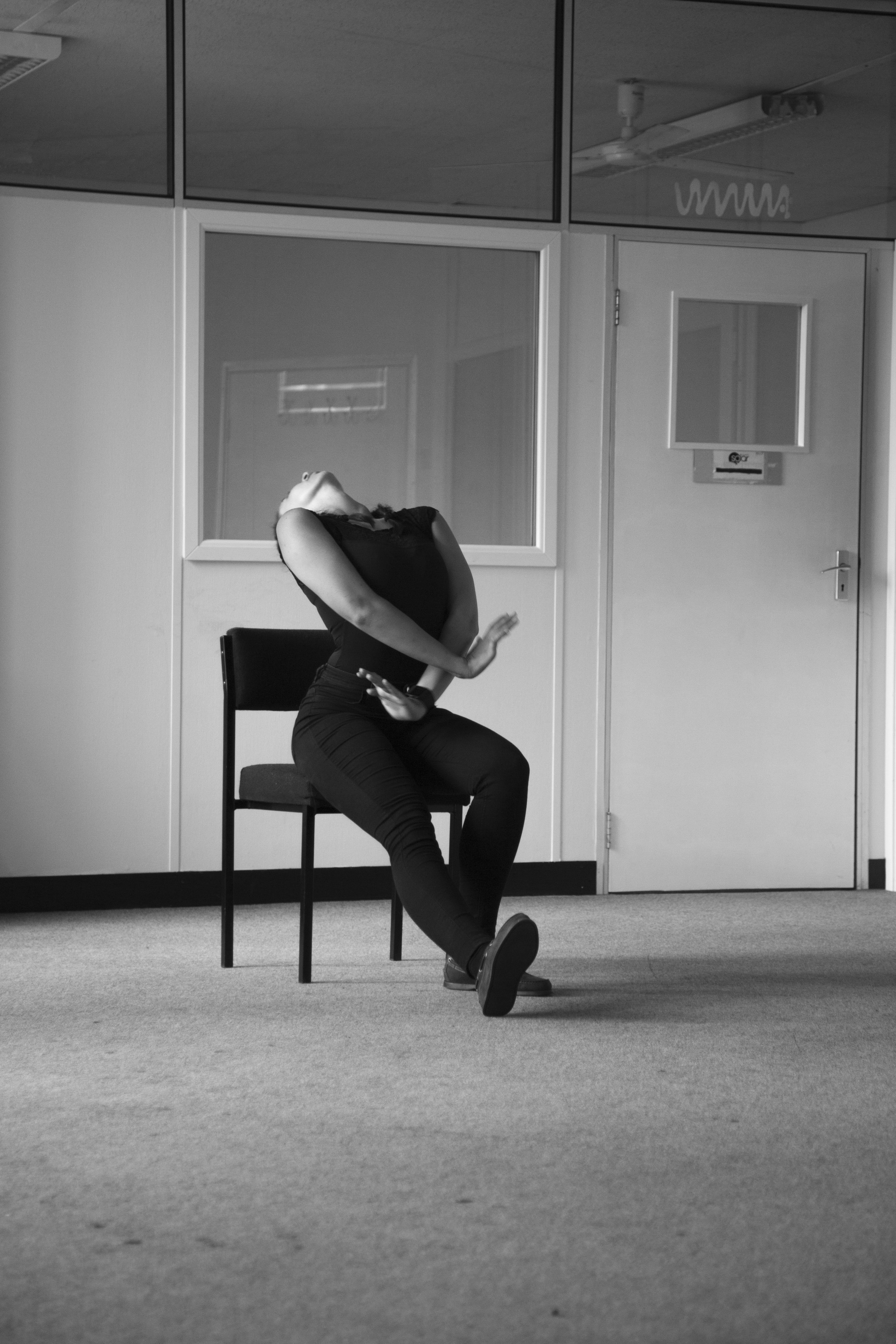

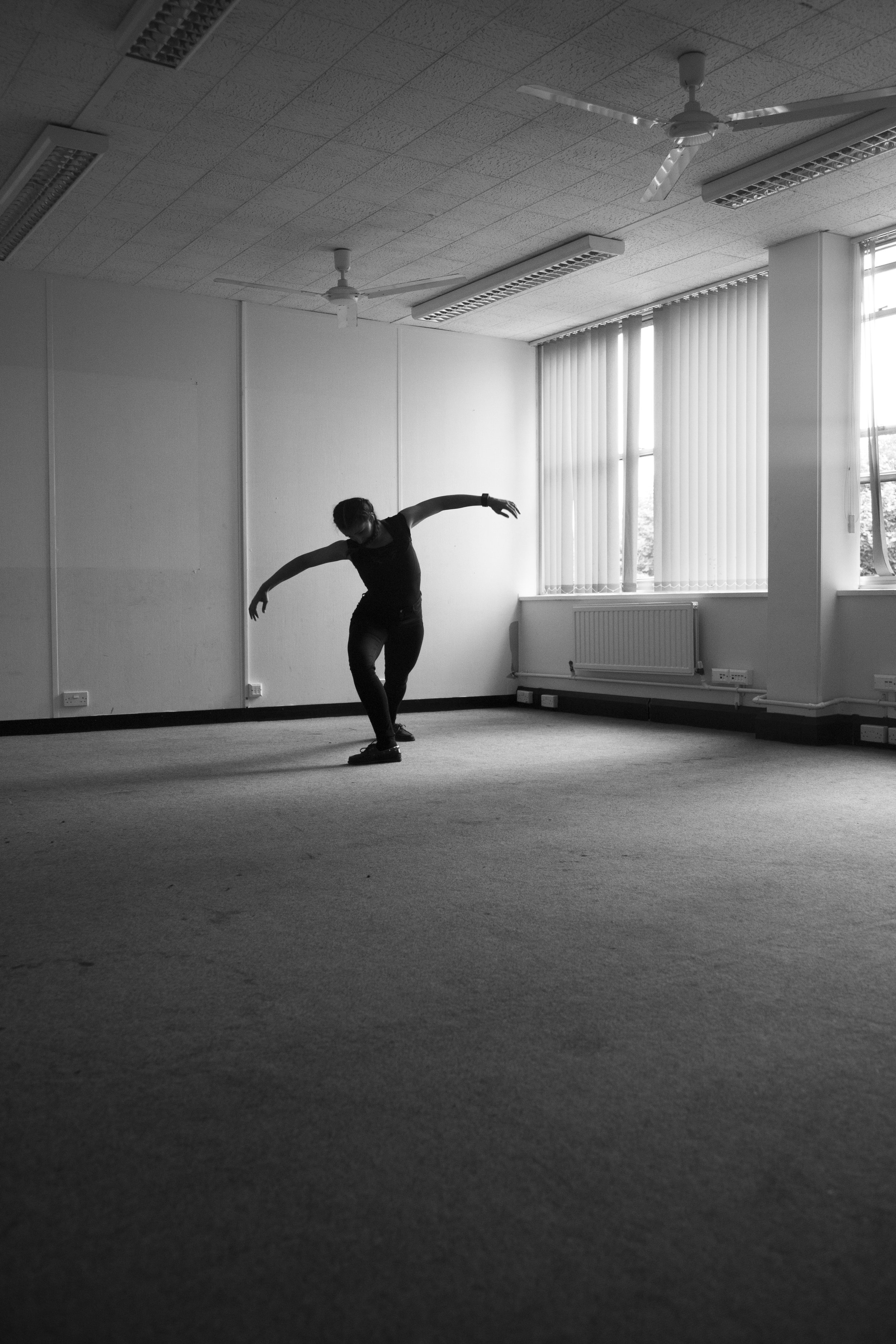
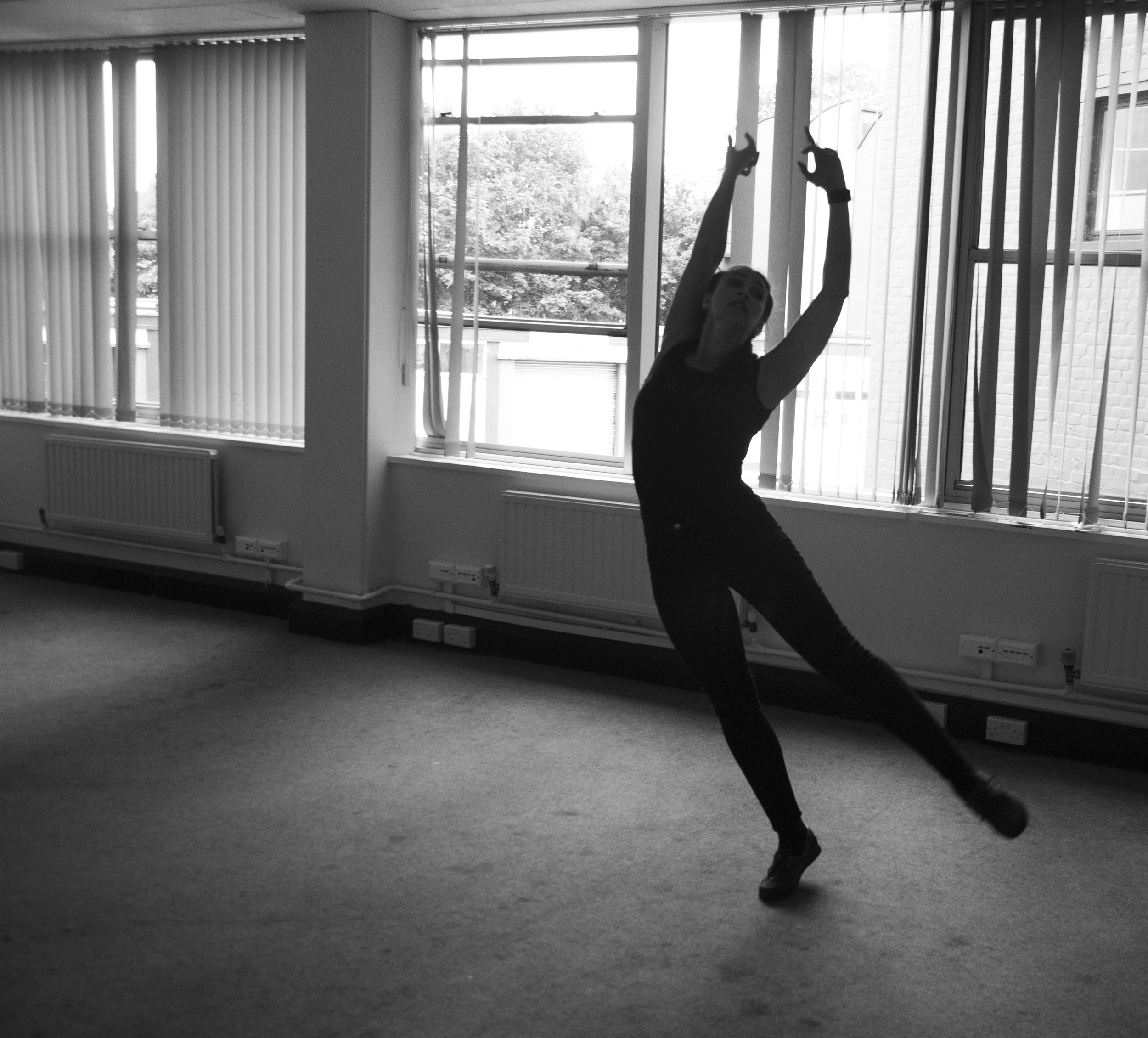
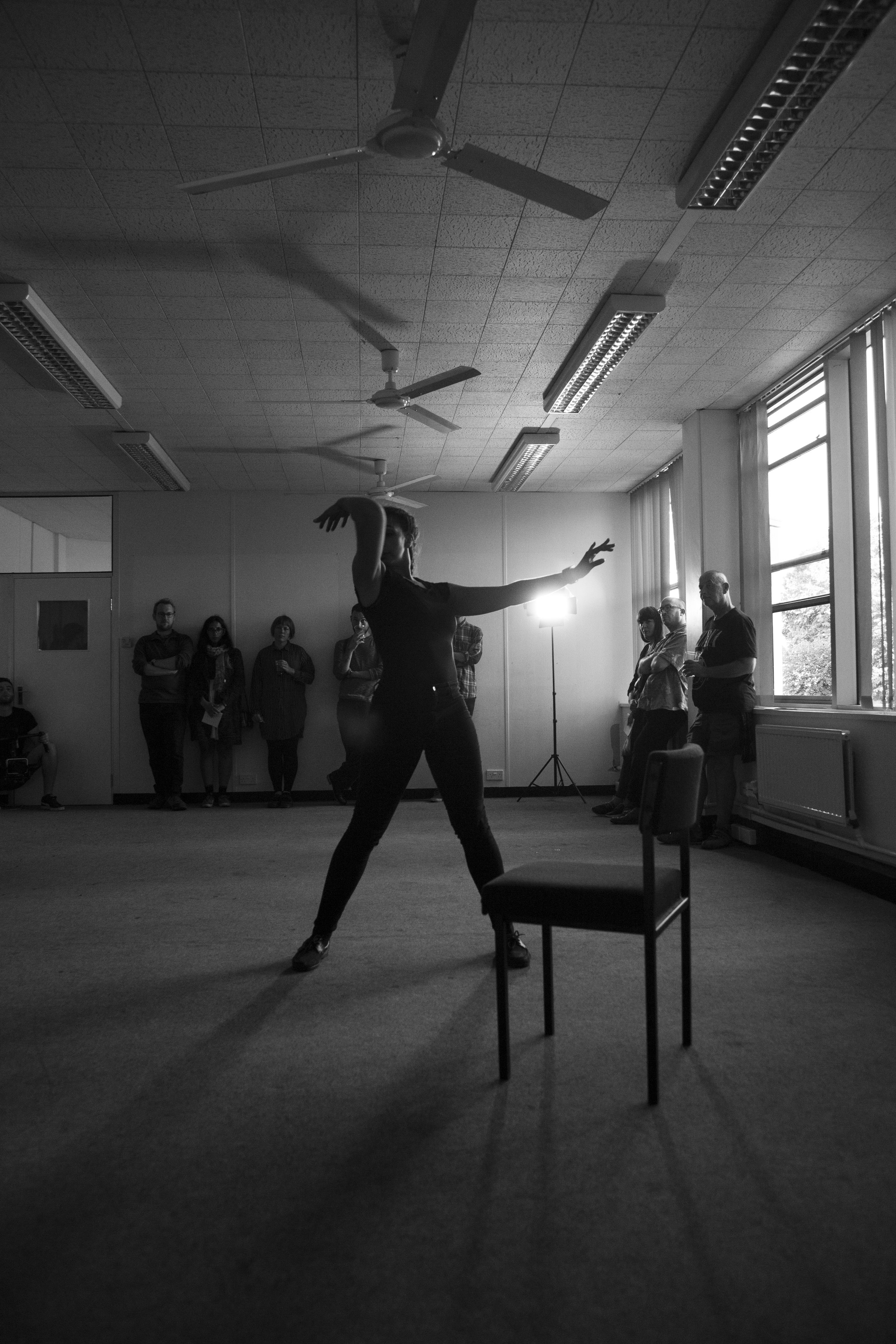
Ellie Sears
Studio Behaviour Dance Performance. 2017
At the age of three Ellie Sears dance training began with the rigorous ballet syllabus of the Royal Academy of Dance. It was at this point that she learnt strength, technique and discipline. Sears continued her studies in ballet and expanded her repertoire in Modern Jazz, Tap and Musical Theatre. Working in summer schools at the Birmingham Royal Ballet, taking classes with Guildford School of Acting and performing on Sadlers Wells stage at the age of seven, she began to use her core grasp of discipline and strength to grow her artistic expression into the realms of contemporary dance. A new field for Ellie Sears, it soon became her favourite.
the drawing shed Sally Labern & Bobby Lloyd
The Public Typing Pool©. 2017
The Public Typing Pool© started its life at Text Festival Bury in 2014, alongside Laurence Weiner launching the new Sculpture Centre at Bury Art Museum. The Public Typing Pool© offers a private space in the public realm where language and image can collide and we ponder and disrupt the accustomed conditions for imagination and communication, slipping in and out of … perhaps regardless of where we are and what we are doing … in and out of daydreaming.
Lavern & Lloyd collaborate both inside and outside the drawing shed where they hold project space LockUpNumber11 on the Drive and Attlee Terrace estates in east London E17; here they co produce / curate projects and residencies with local people, often using their iconic mobile arts structures. Both artists work independently in parallel to the drawing shed both locally and internationally.
Ultraviolet a poem by Carrie Patten
We are in limbo. We're waiting;
sat back to back in the typing pool,
where our shoulder blades rub,
blue and buff. We can plot the space
between us in 0.7's and 0.8's;
it's really only fractional. Measured;
our points of reference are offset
by doubt and approximation.
Let me talk to you, someone,
come and touch our keys because
me and you, we are tongue tied.
You're bound to know your silence
goads me. The lines we spin get jammed
in letters laboured. It's on the tip of.
It's twisted, forked, silver vernacular.
Let's load the paper, there's reams
and reams of the bleached white stuff
for us to reel the linguistic sense right out of.
I would talk to you in pictions,
offer feathered symbols, dot to dot.
Shoot darts, degrees, divisions between
questions I'll trim, bleed and bind.
You'll <fS><| and <fS><| for clues,
but frankly the answers are more than
less than I would want to give.
Imagine if we could just let them roll
like the french curve of a wave,
the cresting fin of an almighty whale,
everything we would like to say melting
across our metal papillae in a froth, breaking,
turbid, seeping over the lip.
Instead what we type we type on ribbons of ultraviolet.
Shine a light on the surface in attempts to decode
our letters circled in the nook of each other,
meaning held between two crescent moons
as comments (bracketed). We fit in the negative
shapes each other leaves behind.
What we mouth we mouth in triplicate
on carbon copies to convince ourselves.
When we've spooled to the end of the line,
we'll need to ask, what do we have to show for it?
I suspect there'll be nothing but marginal release.
Carrie Patten © 2017
With thanks to the inspiration of 'Mind. Language. Matter' and developed with particular regard to the artwork of:-James Kessell, Jim Brown, Liz Collini, Madalina Zaharia, Rowan Lear, Stephen Dutton and The Drawing Shed.



